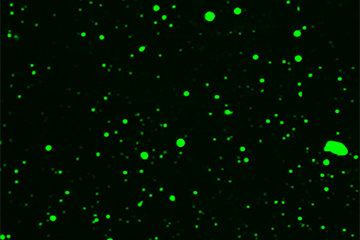Capturing the full spectrum of genetic diversity
A research team led by Raphaël Mercier and Korbinian Schneeberger from the Max Planck Institute for Plant Breeding Research in Cologne investigated the great genome diversity of the most popular research model plant Arabidopsis thaliana. A valuable toolbox to empower future genetic research. The study is now published in Nature Genetics.

The diverse genetic makeup within a population contributes to the array of traits observed, facilitating species' adaptation and evolution. In addition to local variations in the DNA sequence, large genome rearrangements have the potential to greatly influence genetic diversity.
For several decades now, Arabidopsis thaliana has served as a model organism for biological and plant genetic research. The natural diversity of this species correlates with its wide geographical distribution, spanning various climate zones and habitats. Thus, the scientists are keen to study and describe the genetic diversity of A. thaliana.
Small-scale genetic variations have been extensively studied, while larger and more complex genomic variations have remained unexplored due to technical limitations. However, the process of long-read sequencing technologies has now made possible the exploration of this variations.
The researchers strategically selected Arabidopsis plants from diverse geographical regions including Europe, the Middle East, Asia, Africa, Madeira, and North America, ensuring comprehensive representation of the global Arabidopsis genome diversity.
In total, the team analyzed the complete genome of 69 Arabidopsis strains which vary in its sizes within their collection and examined these for different variations. They observed significant variation in genome length which was surprisingly primarily due to variation of the size of the centromeres; a structure that is essential for the distribution of chromosome during cell division. Intriguingly, the rest of the genome showed very little structural variation, with an almost identical chromosome organisation despite plants living far away from each other, like Japan, Spain and Tanzania. This suggests that strong evolution pressure counter-select genome re-arrangements.
Using pangenome analysis – studying the totality of all genes in all strains within the species – the team identified nearly 20,000 gene families commonly shared across all strains. Surprisingly, a very large number of genes (40% of gene families) seem to be dispensable, evidenced by their absence of it in at least one Arabidopsis strain. Moreover, the team was able to pinpoint genes present exclusively in individual accessions, with most of them resulting from the division and fusion of genes. This shows that large variation in gene content contributes to diversity within a species.
Having access to the full spectrum of genetic diversity will greatly enrich research into the genetic underpinnings of traits, phenotypic adaptability, and adaptation. The results of this study offer a great resource for future genetic studies, such as the mechanisms of genome evolution, including DNA repair, mutation, and recombination.
“Our team will use this knowledge to study the effect of genome organisation on recombination, the mechanism that generate genetic variation between generations, for example what makes you different from your brothers and sisters. As the data is freely available, we predict that it will be used by the research community to address to a large diversity of questions in biology”, says Raphaël Mercier.












